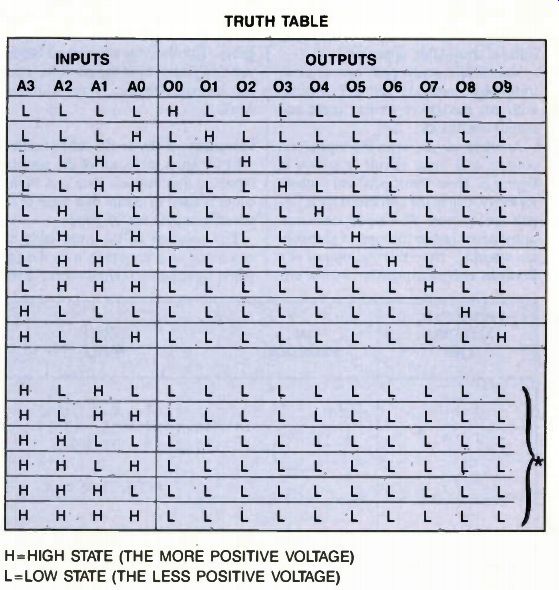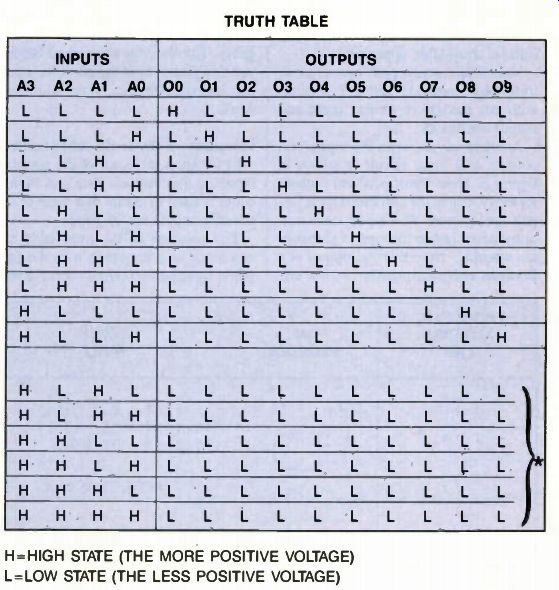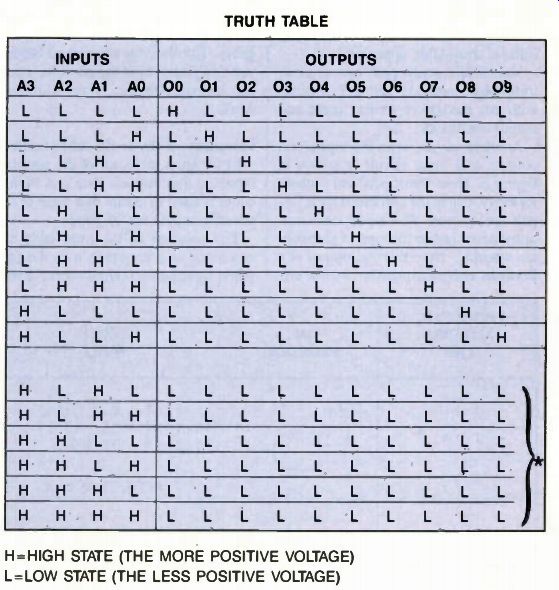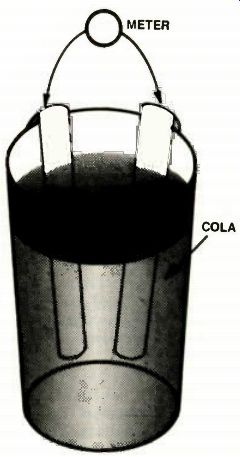Comments on capacitance
By Sam Wilson, CET
A technician friend (who prefers to remain anonymous) sent me an article on capacitors that he believes disproves some of my statements in past issues.
He asked for comments, and I thought it might be a good idea to share these with you.
After reading the article carefully, I did not get the feeling that its author and I were sitting at different campfires. In fact, there are a number of places where we are in violent agreement. In the few places where we have a difference of opinion. I will give you experiments that can be performed.
I offer you the capacitor without models. So far, I see no reason to change my discussion on the subject.
Having offered experimental evidence of what I say is true, I do not feel that the burden of proof is on me.
Uses for the capacitor
The Leyden jar was the first capacitor. It was named for the University of Leyden, in the Netherlands, where it was invented. It was used to store electrical energy. That was its original use, and that is the only use capacitors have today.
Sometimes we talk about types of uses for capacitors: They pass high frequencies but block low frequencies; they produce an ac voltage drop; when used with resistors, they introduce a time de lay. As a matter of fact, these are models for the use of capacitors. None of these things can be accomplished without the capacitor storing energy.
I remember one time when I gave a lecture in Denver saying that there were only three uses of resistors (to limit cur rent, to produce a voltage drop when current flows through them, and to dissipate heat). After the lecture, an enterprising technician advanced a fourth possible use. He said they are used as coil forms for peaking coils. If you have ever seen a peaking coil, you know that it is wound on a swamping resistor.
Therefore, in his way of thinking, the Wilson is the electronics theory consultant for ES&T. resistor is a coil form.
In some applications of capacitors, the energy is stored for a short period of time. In fact, the time for storage can be very small. In the case of ac, it may store energy for less than a half-cycle.
It may charge and discharge at the ac frequency and thereby give the appearance that it is passing the ac. In reality, it is simply charging and discharging at the ac rate, dc voltage or current? What appears to be the most serious difference of opinion between my comments and the article was that the author said a capacitor "blocks dc." It is this statement, which appears to be a contradiction to everything I have said, that the technician most wanted to discuss.
When I say that a capacitor does not block dc, I mean it will not block a dc voltage. I have described experiments showing that the voltage is not blocked.
But when I read the article closely, I find that the author says that it blocks dc current. Barring a breakdown of the dielectric, I agree with that statement completely.
As to whether the capacitor blocks dc voltage, if you wish to take issue with me on that, let me tell you about a meeting I attended in Chicago.
Some well-trained technicians took issue with me on the same subject. They came to the meeting armed with what they considered to be authoritative literature. The argument continued until it began to look as if I would have to take up residence in Chicago.
Finally, I decided to ask for volunteers for a little experiment. It is illustrated in Figure 1. An electrostatic generator was to be used to generate 250,000V. A very large capacitor -- greater than 1,000µF -- was to be placed in series with that voltage. Then, everyone who assumed that the capacitor could not pass the dc voltage was simply to grab hold of the circuit terminals. They would be quite safe, of course, if there really was no voltage across the output terminals. After all, how could the voltage get there if the capacitor blocks dc voltage? To all volunteers we offered a free steak dinner. All they had to do was prove me wrong by grabbing hold of the circuit.

Figure 1. Does a capacitor block dc voltage? In this experiment, an electrostatic
genera tor is used to generate 250,000V. A very large capacitor -- greater
than 1,000AF -- is placed in series with that voltage. If the capacitor could
not pass the dc voltage, a technician could grab hold of the circuit terminals.
There would be no voltage there if the capacitor blocks dc voltage.

Figure 2. Can a capacitor be charged with out moving electrons into and out
of the plates? In this experiment, you start with a capacitor that is totally
discharged. The assumption is that there are an equal number of electrons
on the two plates. When the electret is moved between the plates of the capacitor,
the gold leaves move apart, indicating the capacitor is charged.
TRUTH TABLE
H=HIGH STATE (THE MORE POSITIVE VOLTAGE)
L= LoW STATE (THE LESS POSITIVE VOLTAGE)
*EXTRAORDINARY STATES

Figure 3. This elaborate truth table can be found in the Intel specification
manual for the 1-of-10 decoder (4028B). Boolean algebra can give you the input
and output relationships of a digital circuit, but only the truth table lists
all of the possible input conditions and the resulting output condition.
There was a lot of shuffling and mumbling and looking down at shoe laces and no volunteers. "Well," I said, "if a capacitor won't pass a dc voltage, why not grab on to this thing?" One enterprising technician volunteered the following statement: "There is no voltage there until you touch the circuit." Statements like that stagger my mind.
I am somehow to believe that when the technician touches the circuit, he is instrumental in producing the voltage that is there.
Of course, you and I both know what happens: When he touches the circuit, the capacitor begins to charge. The charging current through the person will be sufficiently high to make him think he is getting an idea.
In reality, no charging current could take place through the body unless there was already a voltage at the point to be touched. I'll repeat -- capacitors do not block dc. But, in order to stay away from contention with people who are talking about dc current, I want to add this: They won't block a dc voltage.
Capacitor charging
The last bone of contention in the article was in the manner of charging the capacitor. The article seemed to imply that there was a difference in the number of electrons on the plate that produced the capacitor charge. The simple experiment in Figure 2 shows that statement is not true.
A capacitor can be charged without moving electrons into one plate and sucking them out of the other. In the experiment, you start with a capacitor that is totally discharged. The assumption is that there are an equal number of electrons on the two plates. When the electret is placed between the plates, the capacitor is charged. A voltage appears across the plates.
So, how does the voltage get on the plates of the capacitor if that can only be accomplished by moving electrons into and out of the plates? The answer is quite simple. The voltage is produced by the charged electret. Once it is in place, there is a difference in the number of electrons on the inner surface of the plate. However, if you take the electret away, the electrons quickly redistribute themselves throughout the material. They do not stay on the inside surface of the plates because the force of repulsion between the like charges in the plates is greater than any force exerted over the distance between the plates.
More digital electronics without Boolean algebra
We are in the midst of a continuing discussion on network theorems and laws without mathematics. In the November issue, I listed the laws of Boolean algebra. All of these laws could actually be used to describe the behavior of variations of basic circuits. All of the laws can be demonstrated by the use of the truth-table method.
For the truth-table method, the inputs and outputs of a digital circuit are determined by combining the columns of the truth table. When I reviewed the previous article, it seemed to me that I was being apologetic about using the truth-table method.
This is an important point: Boolean algebra can give you the input and out put relationships of a digital circuit, but only the truth table lists all of the possible input conditions and the resulting output condition. For that reason, manufacturers sometimes use truth tables in their specifications of digital circuits. As an example, refer to Figure 3. This elaborate truth table can be found in the Intel specification manual for the 1-of 10 decoder (4028B). If you can find a better way to show all of the inputs and outputs simultaneously, don't tell anybody else. Write to me personally and tell me your secret. I collect ideas like that.
Figure 4 shows the truth-table proofs for most of the Boolean algebra statements given in the November issue. The remaining proofs will be given in a later column. There is nothing profound about demonstrating these laws. They have been known for years - even be fore there was a subject called electronics. What is unique is the method of demonstrating that the laws are true by using a truth-table approach.
You should study each one of these truth-table methods and get familiar with this method of writing input and output conditions.
Another way to write the inputs and outputs of a logic circuit is shown in Figure 5. Here the inputs and outputs for every gate in the combined logic circuit are written. The inputs are combined according to the type of gate they are entering. Note that the output is a Boolean algebra expression for the circuit. In this sense it is a demonstration of the correctness of the Boolean algebra. However, as mentioned before, you don't have all of the possible inputs and outputs without some additional work.
Summary of the truth-table method
In the truth table, all of the possible inputs to a circuit are listed. A binary count is used to assure that none of the possible inputs are forgotten.
The columns of the truth table are combined in accordance with the gate where the inputs (columns) occur. Eventually, the last column will be the out put of the circuit.
At that point, you have to be innovative because the output must be interpreted in terms of the conditions that occur. For example, in the EXCLUSIVE OR, there is an output only when the inputs are different. One or the other can be a logic 1, but not both. Likewise, one or the other can be a logic 0, but not both. This is what makes an output an EXCLUSIVE OR. You can't take that final step unless you know the truth tables for the basic gates and for some of the Boolean algebra laws.
A note about safety
Consider this possibility: Your friend has just bought a 1989 Dodge truck. He asks you to help him install a 2-way radio in it. Your friend knows nothing about electronics and has no ability with tools, so you end up doing all of the work. After the installation is complete, you test it. Everything is OK. Two days later your friend is killed in an accident because you installed the radio system incorrectly.
I know, that is a very unpleasant story.
But is it possible for an incorrectly in stalled 2-way radio to cause a fatal accident?
Here is a direct quote from the 1989
Dodge Truck Owner's Manual:
WARNING!
The Anti-Lock Brake System contains sophisticated electronic equipment that may be susceptible to interference caused by improperly in stalled or high output radio transmit ting equipment. The interference can cause possible loss of anti-lock braking capability. Installation of such equipment should be performed by qualified professionals.

Figure 4. You can demonstrate that the laws of Boolean algebra are true with
these truth table proofs.

Figure 5. Another way to get the final output of a logic circuit is to write
the inputs and out puts for every gate in the combined logic circuit. The
inputs are combined according to the type of gate they are entering. Note
that the output is a Boolean algebra expression for the circuit.

Figure 6. To make a simple battery. scrape the paint off of a piece of iron
coat-hanger wire and place it and a piece of copper wire into a glass of cola.
The phosphoric acid in the cola will create a simple cell.
I thought I'd pass this along because technicians don't always read the owner's manual of a friend's new truck.
So you want to be an inventor...
If you want to be an inventor with your own patent, take my advice: INVENT A BATTERY. Any time two different kinds of metals are immersed in an acid or alkali solution, a voltage is always produced.
When you let your mind roll over the wide range of metals, acids and alkali solutions, you know at least one combination hasn't been tried.
You can start out with an example just to prove to yourself that it works. Scrape the paint off a piece of iron coat-hanger wire. Stick it and a piece of copper wire into a glass of cola as shown in Figure 6. The phosphoric acid in the cola will go to work and you will have a simple cell.
To measure the output of this cell, use a 0A to 50µA meter. The meter movement on many analog meters can be used. It will serve as a voltmeter in this example.
Wipe off the ends of the wires and start sticking them any place you are al lowed to stick them. Try a lemon and other kinds of fruits and vegetables.
Keep a record in a bound notebook. A spiral or other type won't do. Date each page. Have two witnesses sign every page. Believe it or not, I have a patent on a booze battery.
Just about anything you try will make a primary (not rechargeable) cell. No need to write and tell me you've been recharging primary dry cells since Hector was a pup. Recharging involves reversing the chemical process. Heating dry cells in an oven - or with a reverse current - rejuvenates them but doesn't recharge them.
Let me tell you about a guy who in vented a rechargeable cell and battery.
His friend asked him to invent a battery to replace the lead acid type used in cars. Chemistry was his hobby, so he got started right away. It took him about seven years. By the time he got the job done, his friend had gone elsewhere.
Of course, you know he was Thomas Edison. The Edison battery turned out to be one of Edison's most profitable inventions - even though his friend (Henry Ford) couldn't wait for it.